The Pastor Installation Service Program is a structured ceremony celebrating a pastor’s transition into a new role, emphasizing spiritual leadership and community engagement through rituals and speeches.
1.1 Definition and Purpose
The Pastor Installation Service Program is a formal ceremony designed to officially welcome and induct a new pastor into their role within a congregation. It serves as a spiritual and communal celebration, marking the beginning of the pastor’s ministry. The program outlines the order of events, ensuring a structured and meaningful experience for all participants. Its primary purpose is to formally induct the pastor, fostering a spiritual connection between the pastor and congregation. Additionally, it provides an opportunity for the congregation to commit to supporting the pastor’s leadership. The program also includes rituals, speeches, and prayers, emphasizing the significance of the pastor’s role in guiding the community. It is a moment of unity, reflection, and hope for the future of the church.
1.2 Historical Background
The Pastor Installation Service Program has deep roots in religious traditions, tracing back to ancient rituals of leadership induction. Historically, such ceremonies symbolized divine ordination and community acceptance. The practice evolved across cultures, incorporating unique customs and liturgical elements. In many faith traditions, the installation of a pastor was viewed as a sacred act, often involving elders, prayers, and symbolic gestures. The modern program reflects these historical practices, blending tradition with contemporary expressions of faith. It serves as a bridge between the past and present, honoring the legacy of spiritual leadership while adapting to the needs of today’s congregations. This historical context underscores the program’s significance as a continuity of sacred traditions and a celebration of ongoing spiritual guidance.
1.3 Cultural and Religious Significance
The Pastor Installation Service Program holds profound cultural and religious significance, serving as a unifying event for the congregation. It symbolizes the transition of spiritual leadership, reinforcing community values and faith traditions. Culturally, the ceremony often incorporates local customs, music, and rituals, making it a celebration of shared identity. Religiously, it marks a sacred moment where the pastor is ordained or affirmed, emphasizing divine appointment and stewardship. The program strengthens the bond between the pastor and the congregation, fostering mutual commitment and accountability. It also highlights the importance of spiritual guidance in community life, reflecting the broader role of faith in shaping societal norms and values. This dual significance makes the installation service a meaningful and transformative experience for all participants.
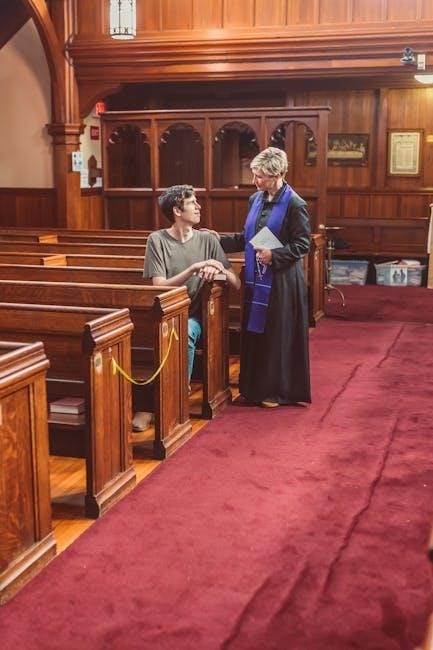
Structure of the Pastor Installation Service Program
The Pastor Installation Service Program follows a structured order, incorporating key elements like prayers, sermons, and rituals, ensuring a seamless transition of spiritual leadership and community celebration.
2.1 Overview of the Service Order
The Pastor Installation Service Program typically begins with a welcome and opening prayer, setting a reverent tone for the ceremony. This is followed by a series of structured elements, including a sermon, the installation rite, and a charge to both the pastor and the congregation. The service order ensures a seamless progression, blending spiritual rituals with moments of reflection and celebration. Key components such as hymns, scripture readings, and communal prayers are thoughtfully integrated to uphold the program’s sacred purpose. The structure is designed to honor the pastor’s new role while fostering unity and commitment among the congregation. Each segment is carefully planned to reflect the significance of the occasion, ensuring a meaningful and impactful experience for all participants.
2.2 Key Components of the Program
The Pastor Installation Service Program includes essential elements that ensure a meaningful and structured celebration. Key components involve the participation of church leaders, congregational members, and guest speakers, who contribute to the spiritual and communal aspects of the service. The program typically features a formal installation rite, where the pastor is officially recognized in their new role. Additionally, it includes prayers, hymns, and scripture readings that align with the occasion’s significance. A charge to the pastor and congregation is also a vital part, offering guidance and encouragement. The program may also incorporate a message from the outgoing pastor or other dignitaries, fostering continuity and unity. These elements collectively create a cohesive and impactful experience, honoring the pastor’s transition while strengthening the community’s faith and commitment.
2.3 The Role of the Installation Ceremony
The installation ceremony is a cornerstone of the Pastor Installation Service Program, serving as a formal acknowledgment of the pastor’s new role. It symbolizes the transition of leadership and the congregation’s acceptance of their spiritual guide. This sacred ritual often includes the presentation of symbols, such as a Bible or a stole, signifying the pastor’s authority and commitment. The ceremony also involves prayers, blessings, and affirmations from church leaders and members, reinforcing the pastor’s divine calling. It fosters a sense of unity and shared purpose, as the congregation publicly pledges support for their new leader. The installation ceremony is not just an administrative act but a deeply spiritual moment that strengthens the bond between the pastor and the flock, setting the tone for their collective journey in faith.
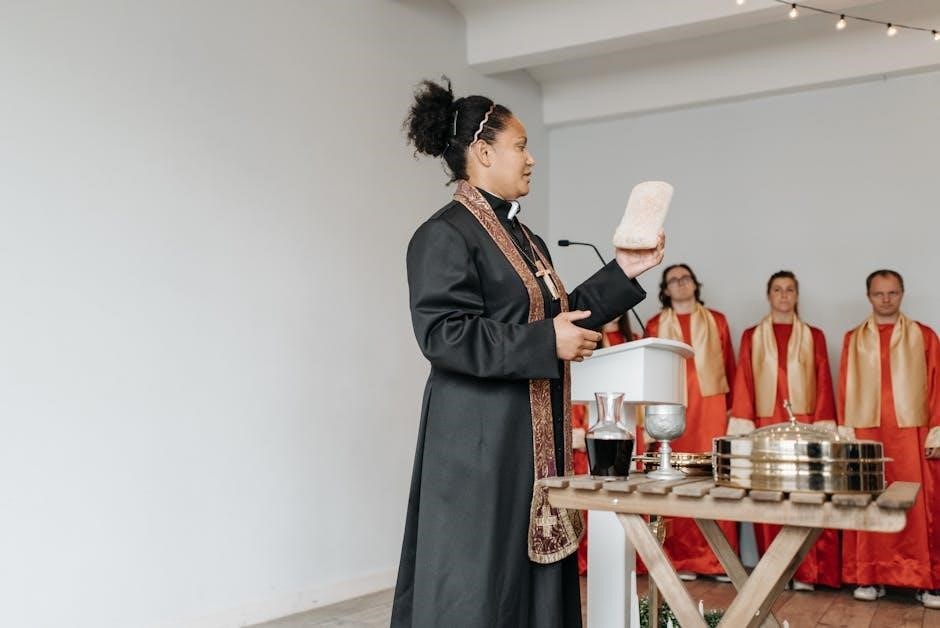
Pre-Service Planning and Preparation
Pre-service planning involves selecting a venue, setting a date, designing the program PDF, and assigning responsibilities to the planning committee, ensuring a smooth and organized event execution.
3.1 Choosing a Venue and Date
Selecting a suitable venue and date is crucial for the pastor installation service. The venue should accommodate the expected number of attendees comfortably, ensuring accessibility and adequate seating. It should also reflect the dignity and significance of the occasion, aligning with the church’s standards. The date must be chosen carefully to avoid conflicts with other major events or holidays, ensuring maximum participation. Factors such as availability of parking, audiovisual equipment, and restrooms should be considered. Additionally, the date should allow sufficient time for preparations, invitations, and promotions. Consulting with the pastor, church leaders, and the planning committee is essential to finalize the venue and date, ensuring everyone’s availability and agreement. Examples of potential venues include the church sanctuary, community centers, or outdoor spaces, depending on the congregation’s size and preferences.
3.2 Designing the Program PDF
Designing the program PDF for the Pastor Installation Service requires careful planning to ensure clarity and professionalism. Start by outlining the order of events, including the welcome, installation rite, and closing prayer. Use clear headings and bullet points for readability. Incorporate the church’s branding, such as logos and colors, to maintain consistency. Choose a clean, legible font and avoid overcrowding pages. Include essential details like the date, venue, and names of participants. Add a section for greetings or messages from church leaders. Ensure the PDF is mobile-friendly for digital distribution. Use page numbers and an index for easy navigation. Finally, proofread thoroughly to avoid errors and ensure the program reflects the solemnity and joy of the occasion. Distribute the PDF via email or the church website.
3.3 Responsibilities of the Planning Committee
The planning committee plays a crucial role in ensuring the success of the Pastor Installation Service. Their responsibilities include coordinating all aspects of the event, from venue selection to program distribution. They must communicate effectively with the pastor, church leaders, and vendors to align expectations. Budget management is another key task, ensuring expenses are tracked and approved. The committee also oversees the setup of the venue, including seating, decorations, and technical equipment. Additionally, they are responsible for distributing the program PDF to attendees and ensuring the ceremony runs smoothly. Their attention to detail and organizational skills are vital to creating a meaningful and organized celebration. By handling these tasks, the committee helps honor the pastor and foster a sense of community among attendees.
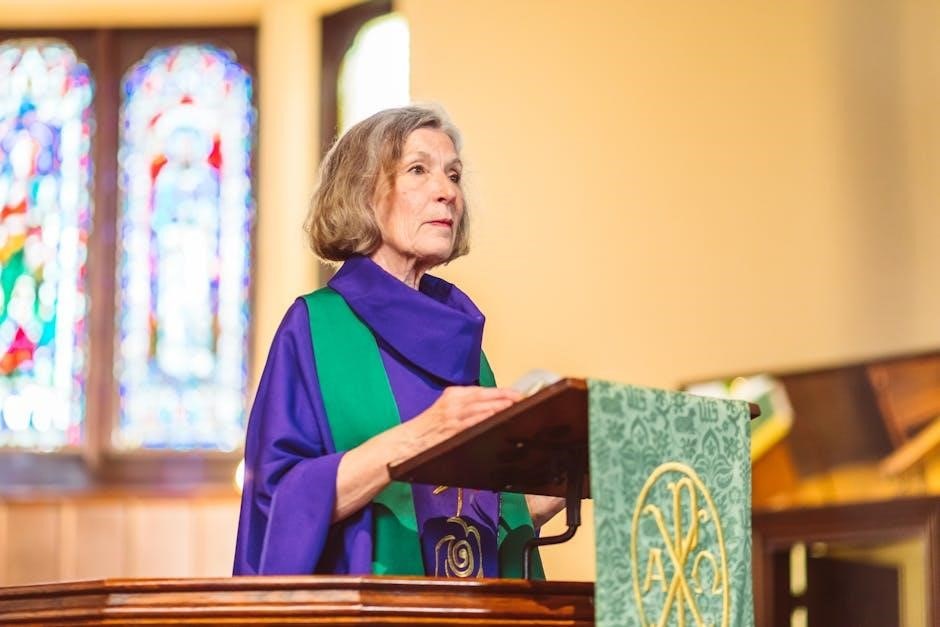
The Installation Service Itself
The Installation Service itself is a sacred ceremony centered around prayer, the installation rite, and the ordination of the pastor, fostering a spirit of unity and dedication.
4.1 Welcome and Opening Prayer
The welcome and opening prayer are integral to initiating the pastor installation service, fostering a sense of community and spiritual connection. The congregation is warmly greeted, and the prayer sets a reverent tone, inviting divine guidance and blessings. This moment unites all participants, emphasizing gratitude for the pastor’s new role and seeking wisdom for the journey ahead. The officiating pastor or elder typically leads the prayer, reflecting on themes of unity, leadership, and faith. The congregation often joins in, creating a collective spirit of dedication and hope. This sacred ritual not only honors the occasion but also prepares the hearts of all involved for the proceedings, marking the beginning of a transformative chapter in the church’s life.
4.2 The Installation Rite and Ordination
The installation rite and ordination are the centerpiece of the pastor installation service, symbolizing the pastor’s divine calling and formal induction into their new role. This sacred ritual often includes the laying on of hands by church leaders, signifying the transfer of spiritual authority and the congregation’s recognition of the pastor’s calling. The ordination reaffirms the pastor’s commitment to serve and lead, while the installation rite officially welcomes them into their position. Key elements may include the presentation of symbols like a Bible or stole, representing their duties and spiritual responsibilities. The ceremony is deeply rooted in tradition and faith, fostering a sense of unity and shared purpose among the congregation. It culminates in a charge to the pastor, outlining their role and responsibilities, while also invoking blessings for their ministry.
4.3 Charge to the Pastor and Congregation
The charge to the pastor and congregation is a pivotal moment in the installation service, emphasizing mutual commitment and shared responsibilities. The senior pastor or bishop typically delivers this charge, urging the pastor to lead with faith, integrity, and compassion. The congregation is reminded of their role in supporting the pastor through prayer, encouragement, and active participation in the church’s mission. This segment often includes a call to unity, spiritual growth, and service to the community. The charge also highlights the importance of collaboration between the pastor and congregation to achieve the church’s vision. It concludes with a prayer, seeking divine guidance and blessings for the new ministry, fostering a spirit of hope and dedication among all present.
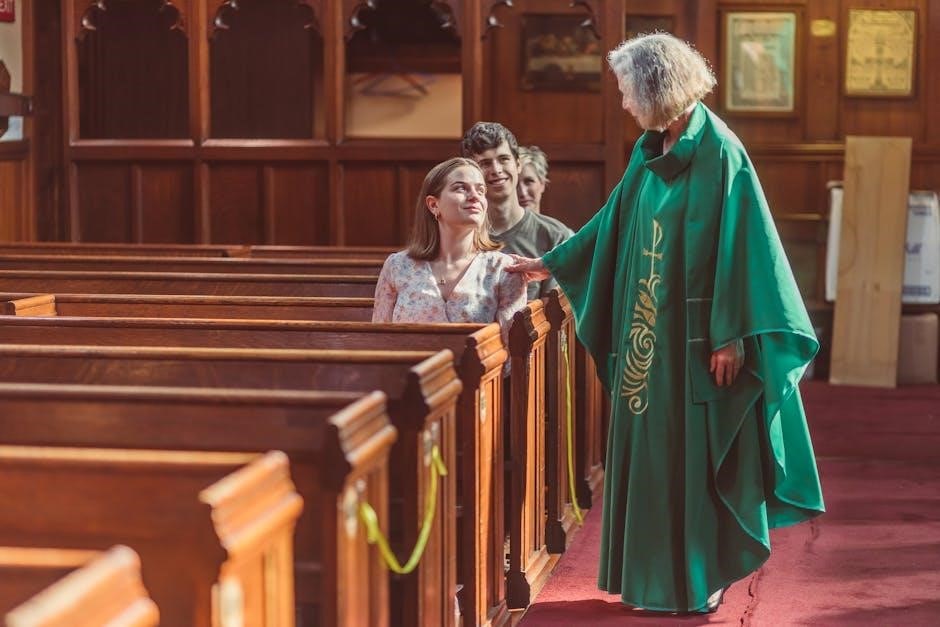
Post-Service Activities and Follow-Up
Post-service activities include a reception for fellowship, follow-up meetings to ensure the pastor’s transition, and evaluating the service’s success to refine future events effectively.
5.1 Reception and Fellowship
The reception following the installation service fosters community bonding and celebration. It typically includes refreshments, music, and informal interactions, allowing attendees to congratulate the pastor and connect with one another. This gathering strengthens relationships within the congregation and provides an opportunity for the pastor to mingle and build rapport. The planning committee ensures the venue is inviting, with appropriate seating and decor, creating a welcoming atmosphere. The reception also serves as a moment for testimonies or brief remarks, further enhancing the sense of unity and shared purpose. It bridges the formal ceremony with ongoing fellowship, ensuring the celebration extends beyond the service itself;
5.2 Follow-Up Meetings and Support
Following the installation service, the planning committee organizes follow-up meetings to ensure the pastor’s smooth transition and ongoing support. These meetings provide a platform for the pastor to share experiences, challenges, and insights, fostering open communication. The committee may also arrange mentoring programs or regular check-ins to help the pastor acclimate to their new role. Additionally, support systems, such as feedback sessions with congregation members, are implemented to gauge the community’s needs and expectations. These efforts aim to strengthen the pastor’s effectiveness and enhance the congregation’s engagement. Regular updates and progress reviews are conducted to ensure alignment with the church’s vision and goals, fostering a collaborative and supportive environment for both the pastor and the community.
5.3 Evaluating the Success of the Service
Evaluating the success of the pastor installation service involves assessing its impact on the congregation and the pastor’s integration. Feedback from attendees is collected through surveys or discussions to gauge satisfaction and emotional resonance. Key metrics include attendance numbers, engagement during the ceremony, and the effectiveness of the charge to the pastor and congregation. The smooth execution of the service order and the clarity of the installation rite are also reviewed. Additionally, the committee assesses whether the service aligned with the church’s vision and fostered a sense of unity. Post-service reflections from the pastor and leadership provide further insights. This evaluation helps identify strengths and areas for improvement, ensuring future services are even more meaningful and impactful for the community.
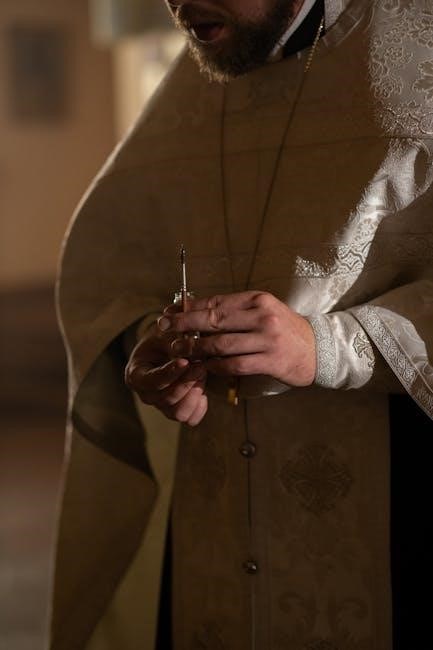
Best Practices for Creating the Program PDF
- Ensure clarity and readability by using clear headings and bullet points.
- Include essential information like the order of events, participant names, and venue details.
- Use appropriate fonts and colors that align with the church’s branding.
- Add high-quality images or graphics to enhance visual appeal.
- Distribute the PDF digitally for easy access before the service.
6.1 Design Tips for Readability
Ensuring readability is crucial for the Pastor Installation Service Program PDF. Use clear, legible fonts like Arial or Times New Roman in sizes 12-14 points. Maintain consistent spacing between lines and paragraphs to avoid clutter. Utilize headings and subheadings to organize content, making it easy to navigate. Incorporate bullet points for lists, such as prayers or speaker names, to enhance readability. Avoid overloading pages with text; instead, use white space effectively. Highlight important sections, like the order of events, with bold text or color accents. Ensure proper alignment of text and images, and avoid low-resolution graphics that may appear blurry. Finally, proofread the document thoroughly to correct any typos or formatting errors, ensuring a professional and polished final product.
6.2 Including Essential Information
When creating the Pastor Installation Service Program PDF, it is vital to include all essential information to ensure clarity and accessibility for attendees. Start with the title of the event, date, time, and venue at the top of the cover page. Include the order of service, listing each segment, such as welcome prayers, speeches, and the installation rite. Provide names and roles of participants, including the pastor, guest speakers, and worship leaders. Add instructions for the congregation, such as when to stand or participate. Contact information for the church and a section for notes or reflections can also be beneficial. Ensure all details are accurate and presented in a logical flow to guide attendees seamlessly through the ceremony.
6.3 Distributing the Program Digitally
Distributing the Pastor Installation Service Program PDF digitally ensures widespread accessibility and convenience for attendees. Share the PDF via email newsletters, social media platforms, and the church website; Embed a downloadable link in event invitations or church bulletins. Use cloud storage services like Google Drive or Dropbox for easy access; Consider sending the PDF through messaging apps for direct reach. Ensure the file is mobile-friendly for viewing on smartphones and tablets. Additionally, provide a QR code linking to the PDF for quick access during the service. This approach reduces paper waste, saves costs, and allows attendees to engage with the program digitally, fostering a modern and inclusive experience for all participants.

Incorporating Technology in the Service
Technology enhances the Pastor Installation Service by providing digital tools for engagement, live streaming, and program distribution, ensuring accessibility and modernizing the traditional ceremony experience.
7.1 Using Digital Tools for the Program
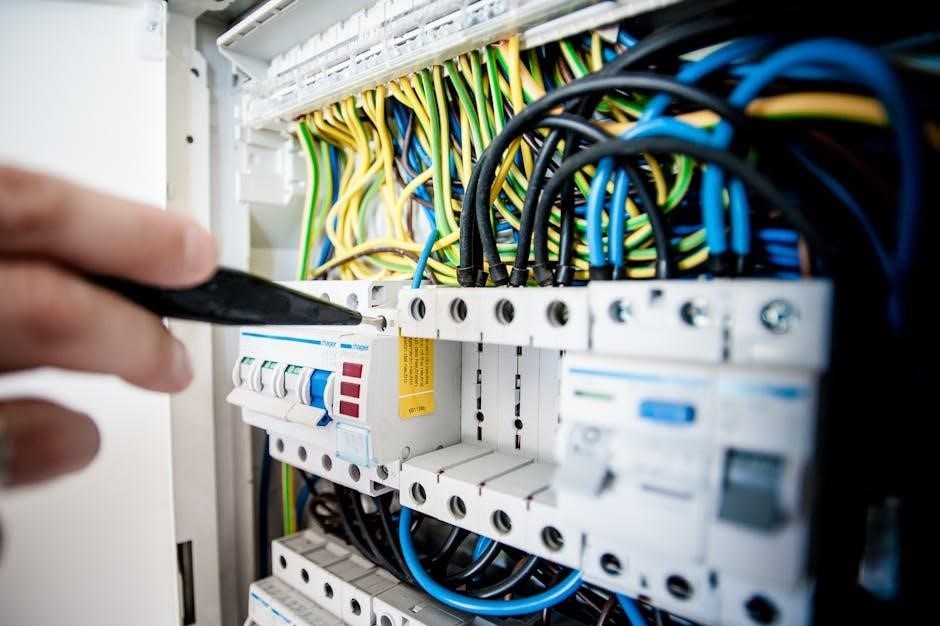
Digital tools play a crucial role in enhancing the Pastor Installation Service Program. PDF design software allows for professional and visually appealing program layouts, ensuring readability and aesthetic appeal. Online platforms facilitate easy distribution of the program to attendees, reducing paper waste and increasing accessibility. Digital tools also enable real-time updates, ensuring all information is current and accurate. Additionally, interactive elements like QR codes can link to videos, speeches, or donation pages, enriching the experience. These tools streamline organization, communication, and engagement, making the service more efficient and inclusive for all participants.
7.2 Live Streaming the Installation
Live streaming the Pastor Installation Service allows for a broader audience to participate, ensuring inclusivity for those unable to attend in person. By utilizing platforms like YouTube, Facebook, or church websites, the ceremony can reach a global congregation. Planning involves selecting a reliable streaming service, testing equipment, and ensuring stable internet connectivity. Promoting the stream through social media and email newsletters maximizes visibility. During the event, clear audio and video quality are essential to maintain engagement. Incorporating live chat or polls can foster interaction, making the experience more dynamic. Recording the stream for later viewing ensures accessibility for those who missed it. This approach seamlessly blends tradition with modern technology, enriching the overall experience.
7.3 Engaging the Congregation Digitally
Engaging the congregation digitally enhances participation and fosters a sense of community during the Pastor Installation Service. Utilize live interaction tools such as polls, Q&A sessions, and chat boxes to involve attendees in real-time. Share updates, prayers, and key moments on social media platforms, using branded hashtags to create a unified conversation. Encourage the congregation to share photos and reflections online, strengthening the collective experience. Provide a digital program PDF with clickable links to scriptures, hymns, and donor information. Post-service, maintain engagement through follow-up emails and online discussions. This approach ensures that the congregation remains connected and active, bridging the gap between physical and virtual participation seamlessly.

Budgeting and Funding the Installation Service
Creating a detailed budget plan ensures the installation service is well-funded, allocating resources for venue, materials, and program PDF design, while seeking sponsorships and donations transparently.
8.1 Allocating Funds for the Program
Allocating funds for the Pastor Installation Service Program requires careful planning to ensure all aspects of the ceremony are covered. Begin by identifying key expense categories, such as venue rental, program design, printing, and refreshments. Assign specific budget portions to each category based on priority and anticipated costs. The planning committee should oversee fund distribution to maintain transparency and accountability. Consider setting aside a contingency fund for unforeseen expenses. Additionally, prioritize cost-effective solutions, such as digital program distribution, to minimize spending without compromising the service’s quality. Regular financial updates and open communication with stakeholders are essential to ensure smooth execution and alignment with the congregation’s expectations.
8.2 Sponsorship and Donations
Sponsorship and donations play a crucial role in supporting the Pastor Installation Service Program. Churches often seek contributions from congregation members, local businesses, or community partners to cover event expenses. Sponsors may receive recognition in the program PDF or during the service. Donations can be monetary or in-kind, such as printing services or venue rentals. A sponsorship package outlining different contribution levels and benefits can be created to attract donors. Additionally, online donation platforms can be utilized for convenience. Transparent communication about how funds are allocated builds trust and encourages giving. Expressing gratitude through personalized thank-you notes or certificates further strengthens relationships with supporters. This approach ensures the service is well-funded while fostering community involvement and generosity.
8.3 Cost-Effective Printing Solutions
Cost-effective printing solutions are essential for producing the Pastor Installation Service Program PDF. Consider using digital tools to design the program, as this reduces the need for expensive design services. Opt for recycled or standard paper types to lower material costs. Partnering with local printers can also reduce shipping fees and support the community. Simplify the design to avoid unnecessary embellishments, ensuring the focus remains on the content. Utilize online templates or church volunteers with design skills to further cut expenses. Printing only essential sections in color and using black-and-white for less critical parts can also save funds. Finally, consider distributing the program digitally to reduce the number of physical copies needed, ensuring affordability while maintaining professionalism.
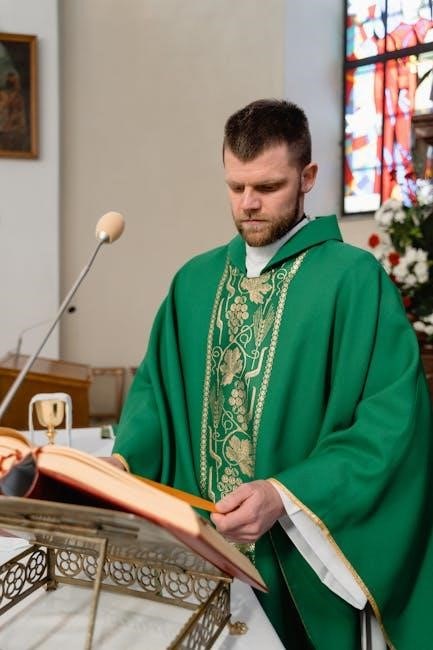
Concluding Thoughts and Final Preparations
Final preparations involve ensuring all logistical and spiritual elements are in place, with a last-minute review of the program PDF to guarantee a seamless and meaningful experience.
9.1 Ensuring a Smooth Execution
Ensuring a smooth execution of the Pastor Installation Service requires meticulous attention to detail and effective coordination. A final checklist should be reviewed, covering all logistical and program elements, such as the order of events, speaker schedules, and technical setups. The planning committee must confirm that all participants are aware of their roles and responsibilities. A thorough run-through of the service order with key stakeholders can help identify and address potential issues. Additionally, assigning a dedicated team to handle last-minute adjustments ensures that the service proceeds seamlessly. Clear communication and teamwork are essential to maintain the flow of the program, creating a respectful and meaningful experience for all attendees. Prayer and final blessings from the congregation can also provide spiritual assurance for a successful event.
9.2 Addressing Last-Minute Details
Addressing last-minute details is crucial to ensure the Pastor Installation Service runs smoothly. A final review of the program PDF should be conducted to verify accuracy and completeness. Confirm the availability of all participants, including speakers and musicians, and ensure they understand their roles. Check the venue setup, including seating, audiovisual equipment, and printed materials. Assign a team to handle unexpected issues, such as technical glitches or last-minute cancellations. Communication is key; maintain open lines with vendors, volunteers, and attendees. Prepare a contingency plan for any unforeseen challenges, ensuring flexibility while maintaining the program’s integrity. Attention to these details fosters a seamless and meaningful experience for all involved, reflecting the significance of the occasion.
9.3 Final Prayer and Blessing
The final prayer and blessing is a profound moment in the Pastor Installation Service, marking the official commencement of the pastor’s ministry. Led by a senior religious leader or a guest speaker, this segment seeks divine guidance and empowerment for the new pastor. The prayer often includes themes of wisdom, strength, and faithfulness, while also blessing the congregation for their support. It serves as a unifying moment, fostering a sense of spiritual renewal and shared purpose. The congregation may join in silent reflection or aloud, reaffirming their commitment to the pastor and the community. This sacred act concludes the service, leaving all present with a sense of hope and divine assurance for the future.


